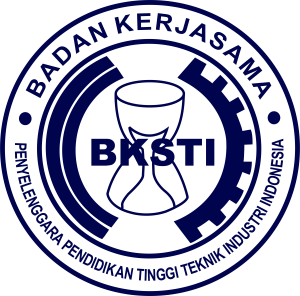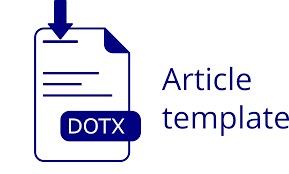Keseimbangan Lintasan Produksi Bis Cap yang Efisien Menggunakan Metode Largest Candidate Rules dan Ranked Positional Weight di PT. P
DOI:
https://doi.org/10.37090/indstrk.v7i1.945Abstract
P Ltd., is a company engaged in the manufacturing industry which produces various technical plastic supporting components with plastic ore as the main raw material. This company produces aircon boxes, bis caps, lamp holders, front grilles, port rings, and bolt-hole masking cups. Some of these items become essential or supplementary components of consumer orders. It employs the Make to Order (MTO) system by making products according to customized products. Of various products produced by P Ltd., a bis cap product was chosen to be the research object for the analysis of its track balance because the bis cap becomes a product that is often ordered by customers and the number of orders is also very large. The high demand of consumers has caused the bis cap production process to get stuck in the quality checking process due to the buildup of finished goods from the production machine. After processing data through the LCR (Largest Candidate Rules) and RPW (Rangked Positional Weight) methods, the optimal results occurred in the LCR method, in which 1 workstation had a line efficiency value of 100.03% and a balance delay value of 0.03%.Downloads
References
Dwicahyani, A. R., & Muttaqin, B. I. A. (2020). Peningkatan Produktivitas IKM melalui Perbaikan Keseimbangan Lintasan Produksi (Studi Kasus: IKM Mebel di Solo). Ejurnal.Itats.Ac.Id/Senopati.
Hapid, Y., & Supriyadi, S. (2021). Optimalisasi Keseimbangan Lintasan Produksi Daur Ulang Plastik dengan Pendekatan Ranked Positional Weight. Jurnal INTECH Teknik Industri Universitas Serang Raya, 7(1), 63–70. doi: 10.30656/intech.v7i1.3305
Indrawan, Y., & Hariastuti, N. L. P. (2012). Minimalisasi Bottleneck Proses Produksi Dengan Menggunakan Metode Line Balancing.
Juwita, E., Bambang Suhardi, & Frisheila Sely Apriliana. (2019). Analisis Keseimbangan Lini Dan Usulan Perbaikan Menggunakan Metode Line Balancing di PT. XYZ. Seminar Dan Konferensi Nasional IDEC .
Nithish Kumar, R., Mohan, R., & Gobinath, N. (2021). Improvement in production line efficiency of hemming unit using line balancing techniques. Materials Today: Proceedings, 46, 1459–1463. doi: 10.1016/j.matpr.2021.03.020
Nur Amalia, A., Yudhanegara, D., & Gumelar, A. (2021). Pengukuran Keseimbangan Lintasan Produksi Sabuk Kopling Mobil. Purwakarta.
Panudju, A. T., Panulisan, S., & Fajriati, E. (2018). HONG TANNERY INDONESIA SERANG BANTEN. JISI: JURNAL INTEGRASI SISTEM INDUSTRI, 5(2). doi: 10.24853/jisi.5.2.70-80
Pisuchpen, R., & Wongsakorn Chansangar. (2014). Modifying production line for productivity improvement: A Case Study of Vision Lens Factory.
Rachman, T., & SANTOSO, C. A. (2019). Penerapan Metode Heuristik Line Balancing Untuk Penentuan Keseimbangan Lintasan Optimal pada Produksi Sampel Sepatu di PT.PBI.
Ramayanti, G., Sastraguntara, G., & Supriyadi, S. (2020). Analisis Produktivitas dengan Metode Objective Matrix (OMAX) di Lantai Produksi Perusahaan Botol Minuman. Jurnal INTECH Teknik Industri Universitas Serang Raya, 6(1), 31–38. doi: 10.30656/intech.v6i1.2275
Restianti, V., Nurhasanah, N., Komplek, S., Agung, M., Azhar, A., Baru, K., & Selatan, J. (2020). Seminar dan Konferensi Nasional IDEC 2020.
Downloads
Published
Issue
Section
License

This work is licensed under a Creative Commons Attribution-ShareAlike 4.0 International License.









